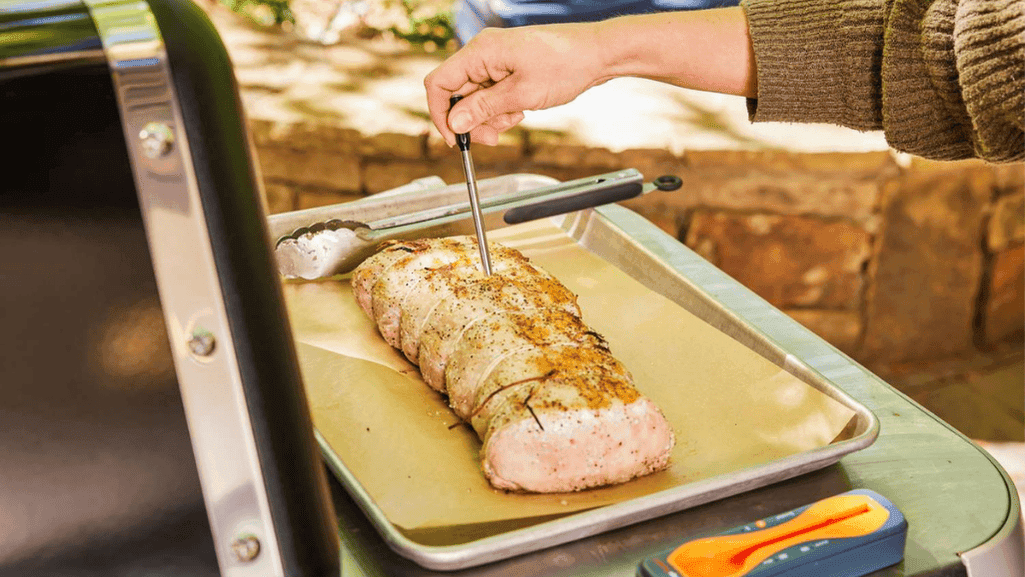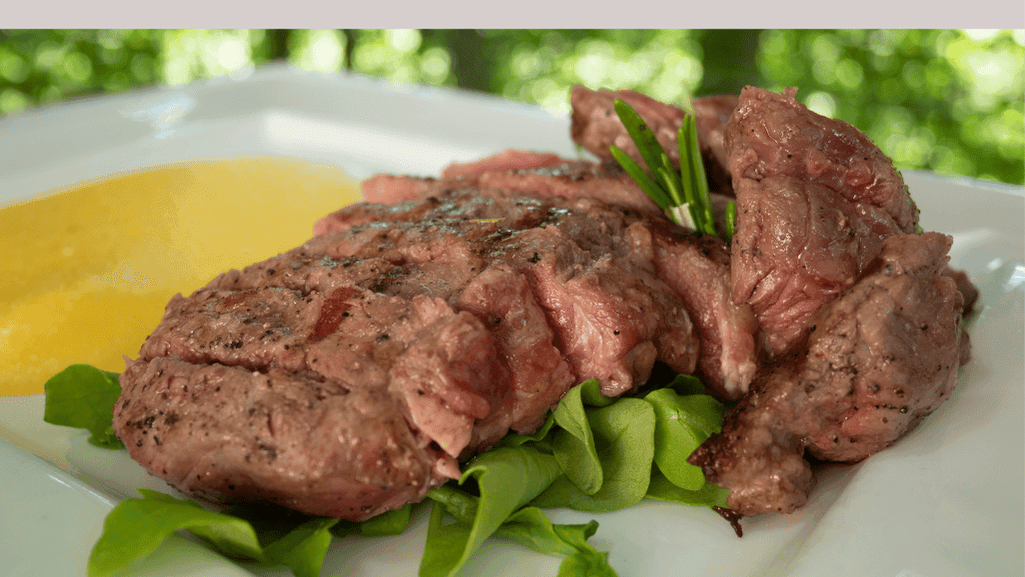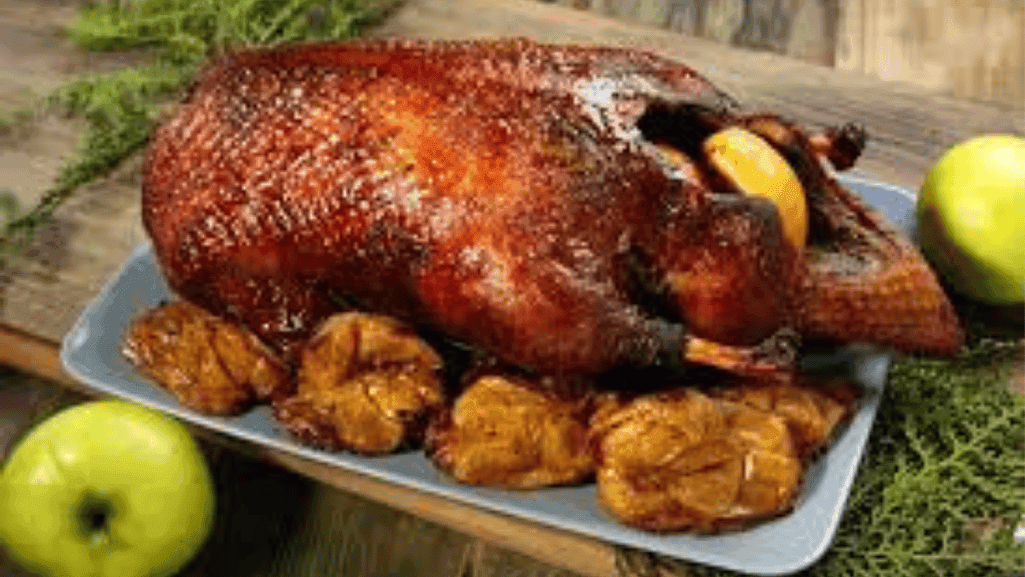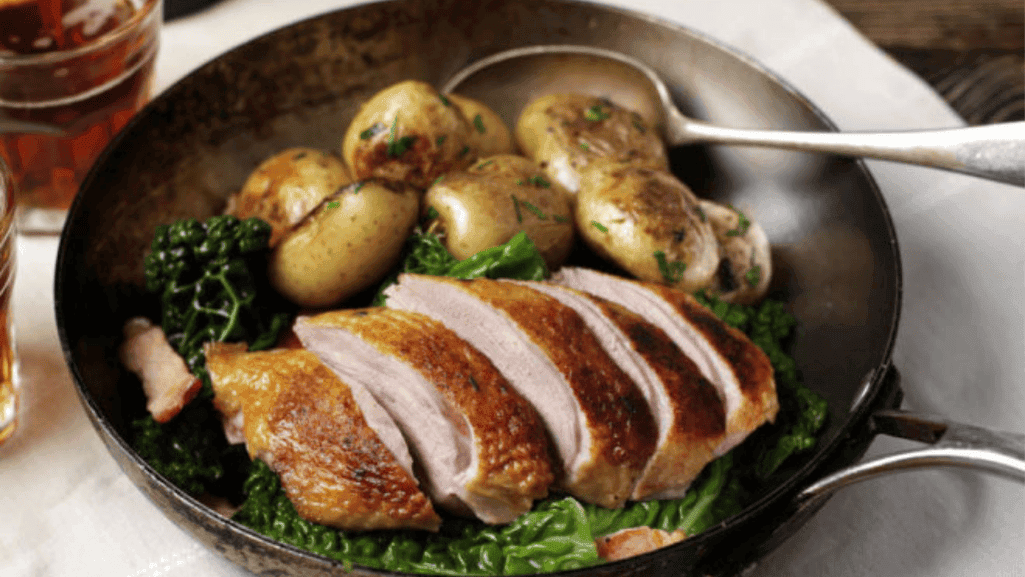When cooking poultry, duck food safety is a big concern. Many love the rich taste of a medium-rare duck breast. But, the USDA and FDA say to cook poultry to 165°F (74°C) to avoid illness.
The British Food Standards Agency says duck should never be pink. This is because duck meat often has campylobacter, a bug that can cause serious illness. Symptoms include diarrhea, cramping, and fever, and can be deadly for those with weak immune systems.
Restaurants sometimes serve duck breast medium-rare to medium. They aim for an internal temperature of 130°F (54°C) for taste and texture. Cooking the duck fat takes about 15-20 minutes, making the meat like a steak.
Eating a medium-rare duck breast is generally safe, like eating undercooked steak or eggs. But, it’s important to know the risks. A well-cooked duck breast is rich and elegant, perfect for fine dining. But, it needs careful cooking to balance flavor and safety.
Key Takeaways
- Experts recommend cooking duck to a minimum internal temperature of 165°F (74°C) to prevent foodborne illness.
- The campylobacter bug, present in a significant portion of duck meat, can cause severe symptoms and potentially fatal outcomes.
- Restaurants often serve duck breast medium-rare to medium, aiming for an internal temperature of around 130°F (54°C).
- Proper cooking techniques and temperature management are key for a safe and tasty duck.
- While a medium-rare duck breast is considered relatively safe, it’s important to be aware of the risks of undercooked poultry.
Understanding Duck Meat and Its Safety
Duck meat is loved in many dishes for its rich taste and soft texture. But, it’s key to know its nutritional value, how it’s different from other poultry, and the dangers of eating it raw.
The Nutritional Profile of Duck
Duck meat is packed with protein, iron, and vitamins and minerals. It has more healthy fats than other poultry, which is good for a balanced diet. This makes duck a great choice for those looking for tasty and nutritious meat.
Differences Between Duck and Other Poultry
Duck and chicken are both poultry, but they taste, feel, and cook differently. Duck has a stronger flavor and more fat, making it tender when cooked right. Unlike chicken, duck breast is often served medium rare to highlight its special taste.
“Duck breast is typically served medium rare in restaurants, but this preference poses a food safety risk if not handled correctly.”
Common Misconceptions About Duck Risqué
Many think duck can be safely eaten like beef or lamb when it’s medium rare. But, duck, like all poultry, can have harmful bacteria like salmonella and campylobacter. Chefs who suggest eating duck breast rare might be risking their customers’ health.
To keep duck meat safe, it’s important to follow proper preparation steps. The USDA and FDA say to cook poultry, including duck, to 165°F (74°C) to kill bacteria. Even if some chefs say it’s okay to cook duck breast less, it’s safer to cook it fully and tell customers about the risks of eating it raw.
Cooking Temperatures for Duck
When cooking duck, knowing the right internal temperatures is key. The USDA says all poultry should be 165°F (74°C). But duck can be cooked lower for juicier results. Let’s look at the best temperatures for different duck parts and why a meat thermometer is important.
What Is Considered Medium Rare?
Duck breast is medium rare at 130 to 135°F (54 to 57°C), says the USDA. This keeps it moist and tender while being safe. Remember to slice the breast thinly against the grain for better texture and taste.
Recommended Internal Temperatures
Duck cooking needs to consider the breast and thighs/legs differently. The breast can go to 135°F (57°C) to stay moist. But thighs and legs need 165°F (74°C) to be tender. Celebrity chef Ina Garten boils the duck in broth for 45 minutes, then roasts it at 500°F (260°C) until the breast hits 135–140°F (57–60°C). This method makes the skin crispy and the inside juicy.
Importance of Using a Meat Thermometer
Using a meat thermometer is vital for safe and tasty duck. It helps avoid duck meat risks from undercooking. A good thermometer, like the ChefAlarm® or Thermapen®, ensures your duck is cooked just right. This means you get a safe and delicious meal every time.
“Cooking duck to the right internal temperature is key to unlocking its full flavor while keeping it safe. Don’t be afraid to aim for medium rare duck breast—it’s a game-changer!”
Knowing the right cooking temperatures and using a meat thermometer lets you cook duck safely and deliciously. This way, you can enjoy the unique flavors of this versatile bird.
Risks Associated with Undercooked Duck
Medium-rare duck breast is a favorite in some cooking circles. But, it’s key to know the risks of eating undercooked duck. Not cooking duck enough can lead to foodborne illnesses from harmful bacteria.
Potential Bacterial Infections
Undercooked duck can pose a risk of bacterial contamination. While ducks are less likely to have Salmonella than chickens, they can carry other harmful bacteria. These include Campylobacter or E. coli, which can cause serious stomach problems like diarrhea, vomiting, fever, and pain.
Differences Between Wild and Farmed Duck
Wild ducks might have a higher risk of bacterial contamination than farmed ducks. Wild ducks face more environmental factors and eat a broader range of foods. This increases their chance of having harmful bacteria. Farmed ducks, raised in controlled environments, have a lower risk of bacterial contamination.
Symptoms of Duck-Related Foodborne Illness
If you think you ate undercooked duck and feel sick, get medical help right away. Common signs include:
- Diarrhea
- Vomiting
- Fever
- Abdominal pain and cramps
- Dehydration
Pregnant women, the elderly, young kids, and those with weak immune systems face bigger risks. It’s vital to cook duck to 165°F (74°C) to avoid these issues. The USDA recommends this safe temperature.
Safe Preparation Techniques for Duck
Preparing duck safely is key to a delicious and safe meal. From defrosting to marinating and preventing cross-contamination, these steps ensure you handle duck with confidence.
Thawing Frozen Duck Safely
Defrosting duck correctly is the first step in safety. Always thaw frozen duck in the fridge, giving it enough time to thaw fully. Never thaw duck at room temperature, as it can lead to bacterial growth and foodborne illness.
Marinating and Seasoning Guidelines
Marinating duck adds flavor and tenderizes the meat. Use a non-reactive container and keep it in the fridge. Discard any leftover marinade that touched raw duck to avoid cross-contamination.
When seasoning duck, think about using herbs like thyme and rosemary. Spices like black pepper and nutmeg also work well. These flavors enhance the rich taste of duck meat.
Avoiding Cross-Contamination
Keeping duck safe from cross-contamination is vital. Use separate cutting boards and utensils for raw duck and other foods. Wash your hands, surfaces, and tools with hot, soapy water after touching raw duck.
“Duck preparation safety is a top priority in any kitchen. By following these guidelines, you can enjoy the wonderful flavors of duck while minimizing the risk of foodborne illness.” – Chef Jean-Pierre, renowned duck specialist
Remember, proper duck preparation safety not only protects your health but also lets you enjoy duck’s unique taste and texture.
Tips for Cooking Duck to Medium Rare
Cooking duck to medium rare needs careful attention and technique. It results in a tender, juicy, and flavorful dish. Here are some tips to help you achieve the perfect medium rare duck:
Choosing the Right Cut of Duck
When selecting duck breast, choose high-quality, free-range ones for the best taste and texture. Look for breasts with a thick, even layer of fat beneath the skin. This fat helps keep the meat moist during cooking. Duck breasts have more fat than chicken, so they need different cooking methods.
Searing vs. Roasting Techniques
Searing duck breast is a popular method for crispy skin and a medium rare interior. Start by scoring the skin in a crosshatch pattern. Then, place the breast skin-side down in a cold pan. Slowly heat the pan to render the fat and crisp the skin. Flip the breast and finish cooking in the oven until it reaches an internal temperature of 135°F (57°C) for medium rare.
Another option is roasting duck breast in the oven. Preheat the oven to 400°F (200°C), score the skin, and season the breast with salt and pepper. Place the duck breast skin-side up on a rack in a roasting pan and cook for 15-18 minutes, depending on the size of the breast and your desired level of doneness. According to Serious Eats, duck breast cooking time ranges from roughly 15-20 minutes for rosy in the middle to 25-30 minutes for well-cooked.
Resting Time After Cooking
Once your duck breast has reached the desired internal temperature, let it rest before slicing and serving. Resting cooked duck allows the juices to redistribute throughout the meat. This makes the meat more tender and flavorful. Tent the duck breast loosely with foil and let it rest for 5-10 minutes before slicing and serving.
A simple method to check the doneness of duck breast is to compare the feel of the meat to different parts of your face. If it feels like your cheek, it’s rare; if it feels like your chin, it’s medium; and if it feels like your forehead, it’s well done.
Popular Medium Rare Duck Recipes
Cooking duck to medium rare makes it tender and flavorful. It’s key to get the duck from trusted sources and handle it safely. Here are some popular medium rare duck recipes to try:
Asian-Style Duck Breast with Soy Glaze
This soy glazed duck breast recipe is great for medium rare. Score the skin and render the fat first. Then, add the glaze. The mix of soy sauce, honey, and spices is amazing.
Classic French Duck Confit
Duck confit is a French dish with slow-cooked duck legs. It’s not medium rare, but it’s tender. Serve it with potatoes and a salad for a fancy meal.
Grilled Duck with Berry Sauce
Grilling duck breasts is a good way to get medium rare. This grilled duck breast recipe has smoky duck and berry sauce. The sauce is sweet and tangy, perfect for summer. Let the duck rest before slicing.
“When cooking duck to medium rare, it’s key to use a meat thermometer. Aim for 58-60°C. This ensures a juicy center and keeps it safe to eat.”
Duck is great for many dishes and cooking styles. Follow food safety tips and try new flavors. You’ll make medium rare duck recipes that wow everyone.
Conclusion: Making Informed Choices About Eating Duck
Enjoying duck safely and deliciously starts with making smart choices. Knowing how to cook duck right is key. This way, you can try many duck recipes while keeping your health in mind.
Key Takeaways on Duck Cooking Safety
To eat duck safely, cook it to at least 165°F (74°C) as the USDA suggests. But, some chefs say cooking duck breast to 135°F (57°C) is okay if it’s from a trusted source. Pregnant women and kids should stick to well-cooked duck to avoid foodborne illnesses.
Final Thoughts on Medium Rare Duck Enjoyment
Medium-rare duck is a treat for many, but safety comes first. Use a meat thermometer and follow cooking rules to make sure your duck is tasty and safe. Duck has more fat than other poultry, which makes it taste richer and is considered red meat in cooking.
Encouragement to Explore Duck Dishes
Duck is nutritious, packed with protein, B vitamins, and iron. It’s great for a healthy diet. Try different recipes like Asian-style duck breast or French duck confit. By choosing quality duck and cooking it safely, you can enjoy a wide range of duck dishes.












